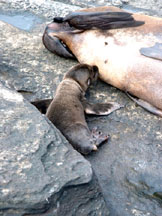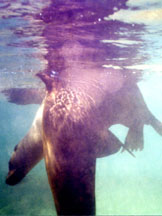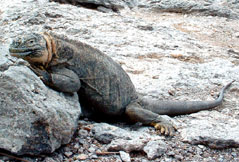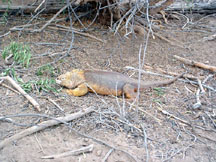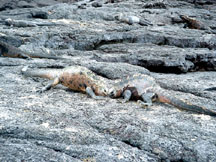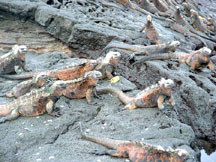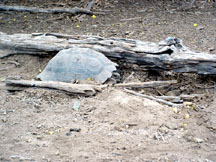|
ARRIVAL AT GALAPAGOS:  On our arrival day the first highlight was seeing three sea lions playing among the machinery on the harbour where we boarded the boat. People took this completely naturally, it was obviously an everyday occurrence. The next thing we have already reported: Mick losing his upper set of teeth. On the same day we snorkelled and saw sea lions with babies and lots of iguanas, both land and marine. Some of the big male iguanas were over four feet long. The male sea lions mostly stayed in the sea guarding their harems and hooted at us if we came too close. They expend so much energy looking after the females that every month or so a new male takes over the harem. There is a bachelor colony of males awaiting their turn just down the coast from the "married quarters". We saw the babies breast-feeding from their mums. |
| The big males have got scars from fighting. In fact we saw sea lions everywhere and sometimes they came up to greet us in the dinghy or the ship, and played with us when we were snorkelling. |
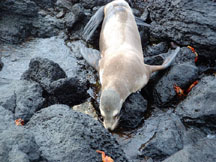 The sea lions' fur is darker when the animal is wet |
 This one has just had a swim : |  Young sea lion playing with stick : |
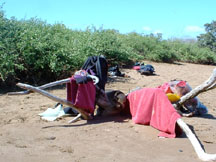 Sea lion using our towels for shade : | 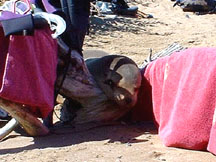 We were glad to be of service : |
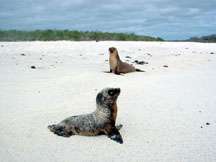 Baby sea lions are often left alone while mother goes fishing |
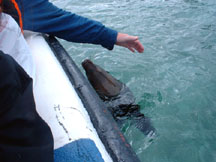 Young sea lions playing | 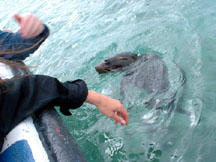 :Sea lions will bite playfully |
 Big male defending his harem |
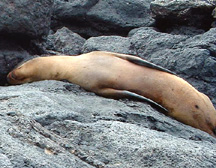 Sea lion doing what sea lions do best | 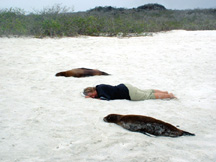 Jean joining in : |
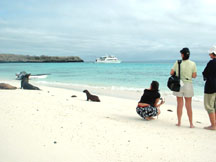 Baby sea lion waits for its mum on the beach |
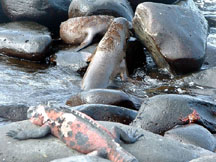 Sea lions share their rock with a marine iguana | 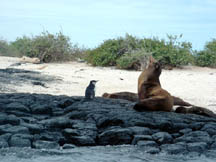 sea lion hangs out with a penguin : |
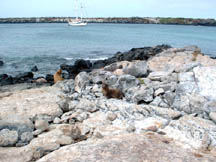 Females just hangin' out : |
|
On Day Two we were taken to the Darwin Research Station on Santa Cruz where we saw giant tortoises (we could walk right up to them but were told not to touch them). They were absolutely enormous and are known to live at least two hundred years, but probably much longer. The station has a breeding programme and they are releasing about 1,000 babies a year on to the islands where they originally came from. They have one huge male named Lonesome George who is thought to be the very last member of his sub-species, brought from Punta Suarez. |
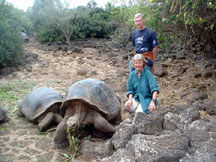 Giant tortoises at Darwin Research Station |
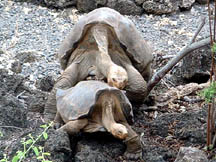 Giant tortoises mating : | 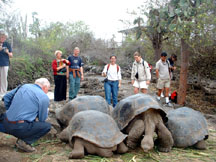 Feeding time for giant tortoises : |
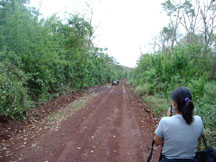 Giant tortoises in the wild |
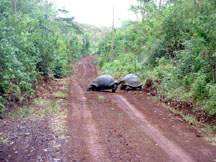 They turn off the road to avoid us |
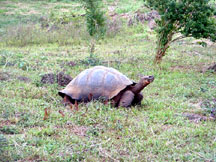 Waiting in the field until we go away |
|
By the end of our second day we were very thrilled about Galapagos and had fully adapted to life aboard ship. Our stomachs were growing accustomed to the rocking motion and we were able to sleep soundly without medication, even when the boat was sailing through rough seas at night. |

